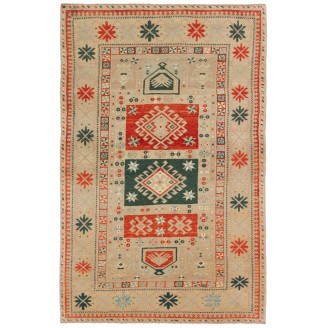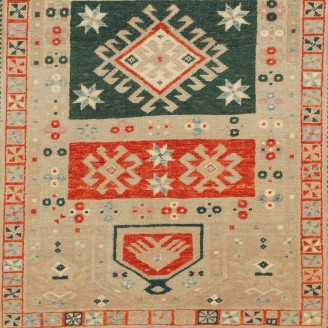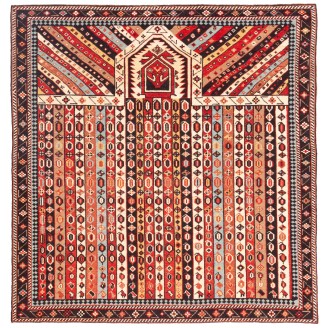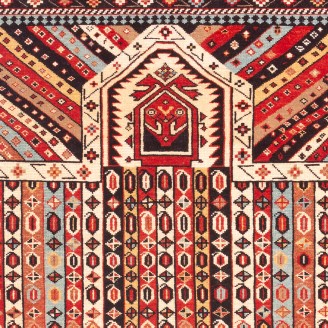Perepedil Shirvan Prayer Rug
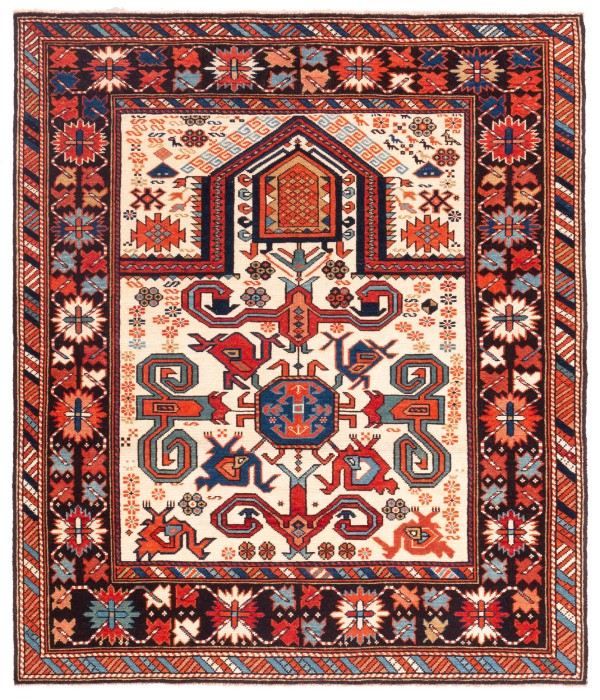
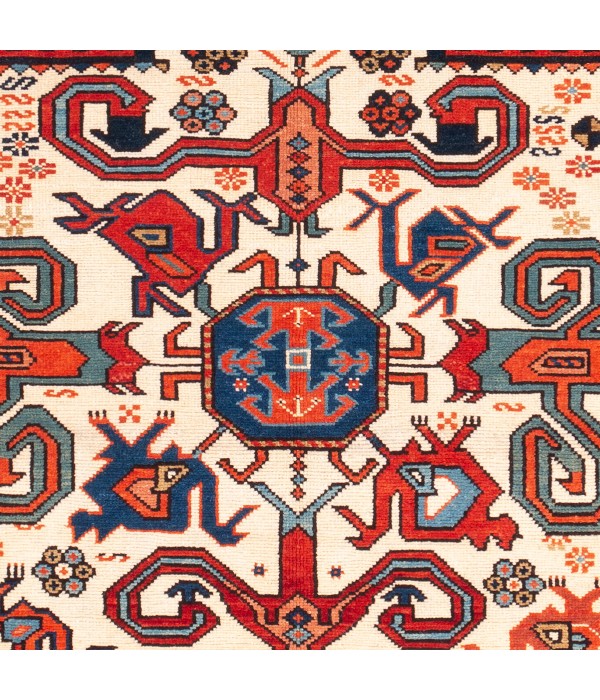
Out Of Stock
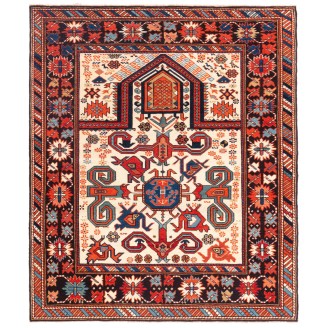
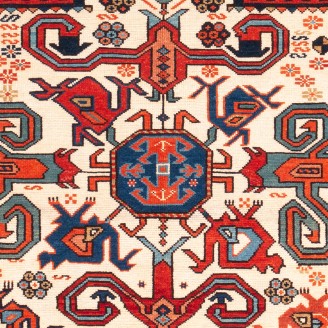
Model: ART00031Perepedil Shirvan Prayer Rug
Group: Caucasian Rugs Family
Area: Shirvan region
Material of Pile: Natural Dyed Hand-spun Wool
Material Warp / Weft: Wool on Wool
Structure: Symmetrical knot on depressed warp inclining to the right
Knots Density: 35x42
Pile (mm): 2
Production Place: Southeastern Anatolia – Harran
Location: Tokyo
Stock: Out Of Stock
Dimensions:
The source of the rug comes from the book Tapis du Caucase - Rugs of the Caucasus, Ian Bennett & Aziz Bassoul, The Nicholas Sursock Museum, Beirut, Lebanon 2003, nr.60 and Oriental Rugs Volume 1 Caucasian, Ian Bennett, Oriental Textile Press, Aberdeen 1993, pg.280 and Caucasian Carpets, E. Gans-Reudin, Thames and Hudson, Switzerland 1986, pg.292. This is a comparatively rare white ground prayer rug with an interesting version of the Perepedil design, from the late 19th century, Shirvan region, Caucasus area. The design itself has been subjected to a number of different interpretations, often based on the misconception that this is a highly stylized zoomorphic pattern. This notion is enforced by the fact that the vurma or buynuz (ram's horn or horn) pattern is known by the weavers themselves. Recent research, however, has demonstrated quite clearly that what we are seeing is a perfect example of how a purely floral design derived from 17th-century textiles has been turned into an animal one by the slight altering of key elements. It is framed with a series of borders, the main of which is the “crab” design. The design of the rug is interpreted by our designers, and the most appropriate colors to match the original is used for this rug.
Color summary: 12 colors in total, most used 4 colors are;
Color summary: 12 colors in total, most used 4 colors are;
- Black Chocolate 434 (Pomegranate - Spurge - Madder Root)
- Natural Wool Color 320 (No Dye)
- Rufous 308 (Madder Root)
- Imperial Red 415 (Madder Root)
Dimensions:
3 ft 8 in x 4 ft 3 in ( 112cm x 130cm )
Price:
$3,520
Ex Tax: $3,520

